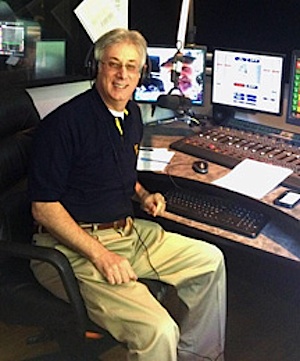

Charlie Cook
Some interesting demographic information was presented late last month to TV executives, and it has a considerable effect on radio.
The 18-49 demographic is a smaller percentage of the overall population in numbers. This according to research presented recently by CBS-TV researcher David F. Poltrack, in defense of CBS television having the oldest median viewer, 56.1 years. People 18-49 make up only 55 percent of all adults. A decade ago this number was 62 percent.
The number that stunned me was 82 percent of 18-24-year-olds live in someone else’s home. Most likely their parents. From someone who left home at 18 and never went back, this percentage surprises me but this number is really scary. Fifty-six percent of those 25-34 years old are in a similar situation.
I am from the baby boomer generation. The 25-34 year olds are being referred to as boomerangs. They just keep coming back. I know this is an impact from the economics of today’s workplace. I don’t mean to joke about this situation. I am sure a 32-year-old male is not happy to be living back with his parents. In many cases he may have brought along a family.
How does this impact radio? Well in PPM households it is all in or none in. So now a household could now include ages 6-65. A child, her parents and grandparents. If you don’t think this happens often, look around. Fifty-six percent of 25-34 year olds are not living in their own domicile. That is a big number.
I would also suggest you think about how many radios are in homes today. In the good old days, there was a radio in every room and the listener would follow the morning show through their routine. From the bedroom, to the bathroom to the kitchen and then to the car. Do you think this is today’s routine? Add the fact that there are a number of tastes being represented in the average household today and the one thing they do agree on is Good Morning America in the living area.
With the recent death of Kidd Kraddick, the impact a really good radio personality can have on listeners came to everyone’s attention. Reading the posts and listening to KHKS-FM the first workday after his death proved a good radio personality can move the masses. Kidd was the kind of talent that would actually be able to appeal to the wide spectrum of ages in today’s household.
Can your morning show? If the answer is no, it is not too late to make the changes necessary to do so. We talk about identifying your listener so the staff can focus on him/her. Maybe now we need to think about households and how we can provide a morning show so entertaining no one wants to make another choice. Content, content, content. Planning, planning, planning.
I know the radio listener is going to make the overall choice of their favorite station based upon the music you play, but morning shows can make a difference no matter the format. Growing up, I did not have a choice of which station to listen to if my father was around. He chose the station. Listening to the morning show on WXYZ as a kid, playing music I could not stand still led me to my career. The morning disc jockey was funny, warm and he knew the city of Detroit like the back of his hand.
A morning show can make that kind of difference in a household, but it takes real effort directed at every demo in the house every day.
(The views expressed in this article are those of the author and do not necessarily reflect those of MusicRow.)



